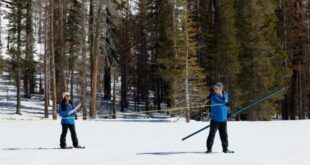1,2,3-Trichloropropane, a man-made chemical, historically found in industrial cleaning solvents and some soil fumigant pesticides will now be regulated by a new drinking water standard adopted this week by the State Water Resources Control Board. 1,2,3-Trichloropropane – also known of as 1,2,3-TCP – is a recognized carcinogen that has been found in groundwater sources, primarily in California’s Central Valley.
“1,2,3-TCP is not naturally occurring and too many Californians have been exposed to it for far too long, which is why it has been our top priority for standard setting this year,” said Felicia Marcus, chair of the State Water Board. “This standard will better protect public health and allow communities and the state to get on with the job of getting it out of our water supplies.
The new regulation will require that 4,000-plus public water systems statewide begin quarterly sampling for 1,2,3-TCP in their drinking water sources as of January 2018. Systems will either be in or out of compliance with the new drinking water standard based on the average of four quarters of sampling. With the new regulation, public water suppliers will be required to notify their customers and take corrective action when drinking water exceeds the specified, allowable limit.
The drinking water standard, also known as a maximum contaminant level, is a set limit on what’s an allowable concentration of a contaminant in tap water. The State Water Board’s Division of Drinking Water has set the new standard for 1,2,3-TCP at 5 parts per trillion (ppt).
The Division of Drinking Water has estimated that 103 water systems serving some 920,000 Californians have 1,2,3-TCP above 5 ppt in at least one drinking water source according to 2015 data. Communities in several counties within the Central Valley are particularly vulnerable due to their reliance on groundwater and past use of pesticides containing 1,2,3-TCP in many agricultural areas.
In addition to notifying its customers if a water system’s four-quarter average is above the 5 ppt standard, the agency must also take corrective steps to rectify the exceedance in order to avoid future violations of the standard. The State Water Board is available to assist water systems in violation of the 1,2,3-TCP standard with technical in order to reach the new compliance standard. In some instances, for certain communities, funding assistance may be available through the State Water Board’s regular financial assistance programs.
The 1,2,3-TCP standard is the first drinking water standard adopted by the State Water Board since the Division of Drinking Water joined the Board in July 2014. The Drinking Water Division was previously a part of the Department of Public Health. The Division of Drinking Water recommends that water systems with previous monitoring data indicating a high potential for future 1,2,3-TCP violations to begin taking corrective action prior to January 2018.
 California Water News Daily Your Source For Water News in California
California Water News Daily Your Source For Water News in California


